
AI Tools for Theme Analysis
AI tools for theme analysis save time, improve accuracy, and handle large data sets effectively. They help researchers and marketers identify patterns in text data like customer feedback or social media posts. Here’s why they matter:
- Speed: Analyze thousands of responses in minutes.
- Consistency: Reduce human error in pattern detection.
- Scalability: Process massive datasets effortlessly.
- Deeper Insights: Spot subtle connections often missed manually.
Top Tools include:
- ATLAS.ti: Handles mixed data types (text, audio, video).
- Leximancer: Creates visual maps of concepts.
- Thematic: Focuses on customer feedback analysis.
- XM Discover: Combines surveys with text analysis.
- Dovetail: Ideal for UX research with collaboration features.
For quick comparisons:
| Tool | Best For | Key Features |
|---|---|---|
| ATLAS.ti | Mixed data research | Advanced coding, multi-format |
| Leximancer | Concept mapping | Visual insights, automation |
| Thematic | Customer feedback analysis | Sentiment tracking, trends |
| XM Discover | Customer experience teams | Surveys + text analysis |
| Dovetail | UX research | Collaboration, sentiment analysis |
These tools complement human expertise, turning complex data into actionable insights. Pair them with AI infographic tools like Piktochart AI or Venngage AI to visualize findings effectively.
Understanding AI-Powered Theme Analysis
What is Theme Analysis?
Theme analysis is a way to identify and interpret patterns within qualitative data. It helps uncover recurring ideas and trends in sources like customer feedback, social media discussions, and market research. For example, analyzing customer reviews can highlight patterns such as concerns about pricing or requests for specific features, which can guide product and marketing strategies [3].
Challenges in Manual Theme Analysis
Manual theme analysis comes with several challenges:
| Challenge | Impact | Example |
|---|---|---|
| Time Consumption | Slows down insights | Sorting through 1,000+ customer reviews takes weeks |
| Human Error | Inconsistent results | Different analysts may interpret the same data in varying ways |
| Scale Limitations | Restricted data handling | Struggles to process millions of social media posts |
| Bias | Skewed outcomes | Personal viewpoints can influence theme identification |
These issues are especially problematic in large-scale research projects [3][2].
How AI Improves Theme Analysis
AI tools, powered by natural language processing (NLP) and machine learning, are changing how theme analysis is done. Here's how:
Automated Pattern Recognition: AI can process huge amounts of text quickly, spotting patterns and connections that might escape human analysts. It uses contextual understanding to group related ideas automatically [4].
Improved Accuracy: Tools like Thematic ensure consistent analysis by identifying themes linked to customer satisfaction and loyalty. This helps businesses focus on the most impactful improvements [4][2].
Faster Processing: AI works in real time, making it possible to analyze massive datasets - like millions of social media posts - quickly. This allows for rapid trend detection and deeper insights [3][4].
Thematic Analysis Using AI - The Ultimate Tool for Qualitative Data Analysis
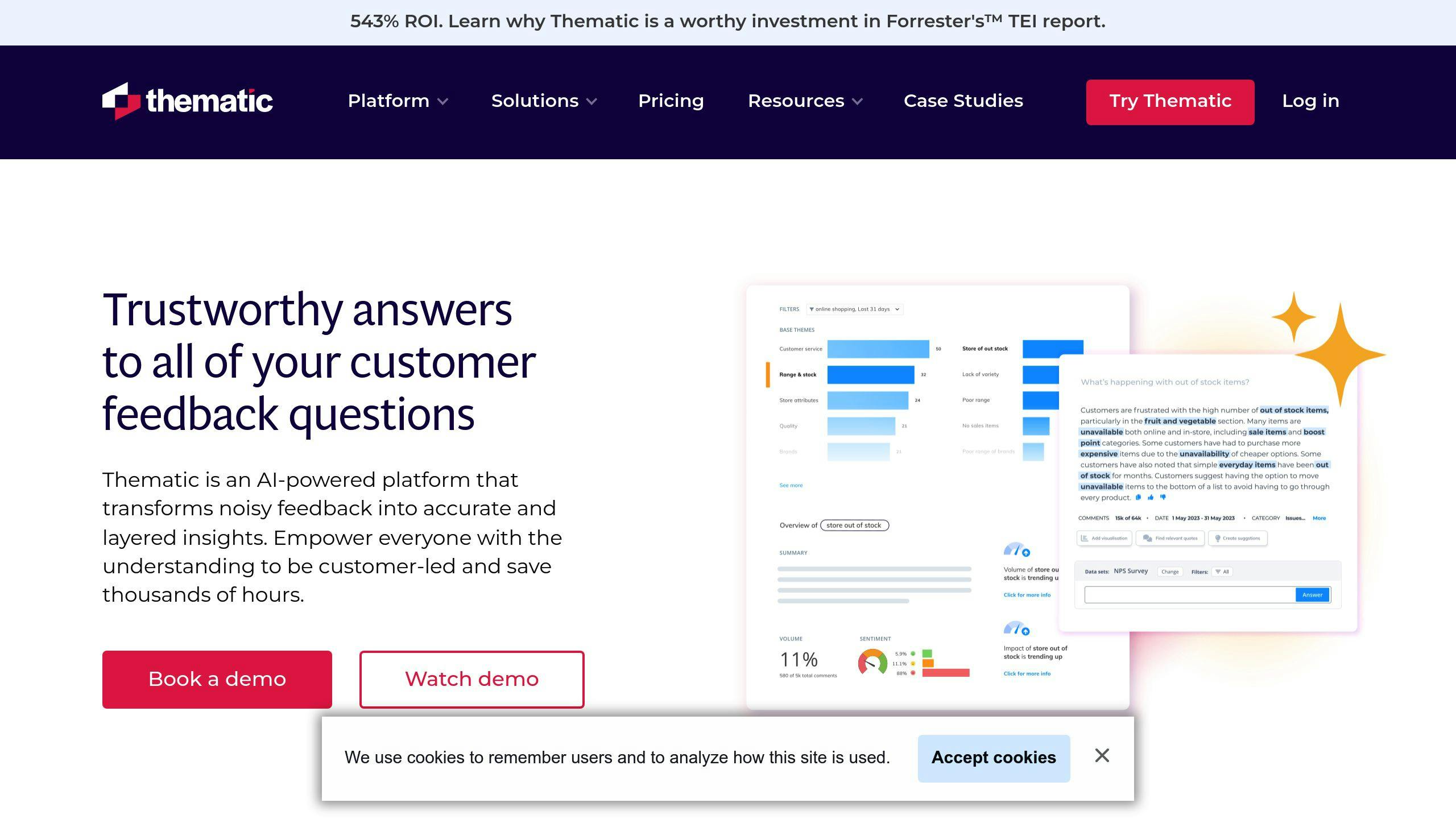
Top AI Tools for Theme Analysis
Let's dive into some of the most effective AI tools shaping the way we approach thematic analysis.
ATLAS.ti
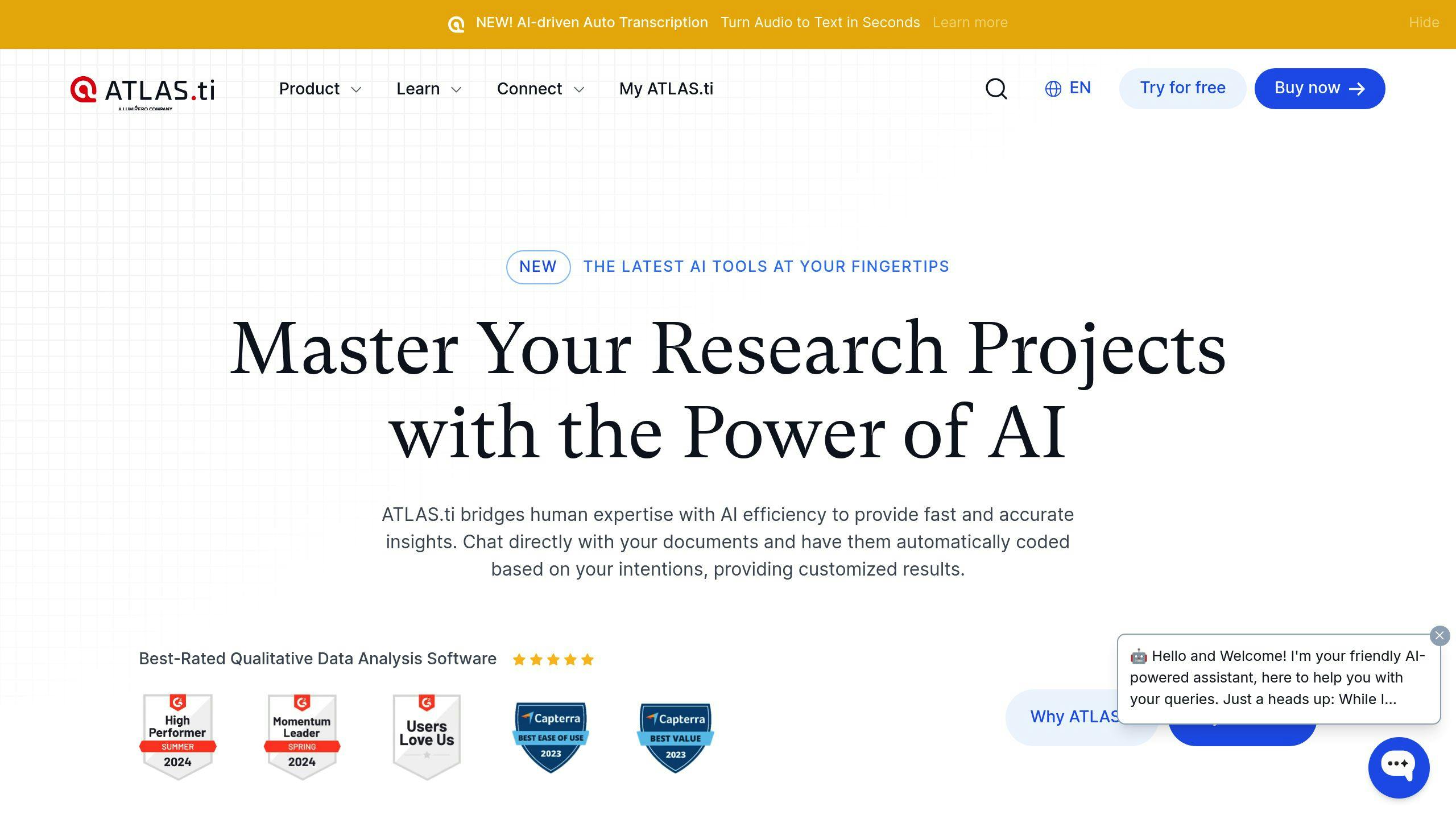
ATLAS.ti is designed to handle complex datasets across various formats, such as text, audio, video, and images. It offers advanced coding tools and a powerful query system to uncover patterns and relationships between themes. This makes it particularly useful for mixed-methods research. By combining AI's precision with human interpretation, ATLAS.ti provides researchers with a flexible and reliable solution.
Leximancer
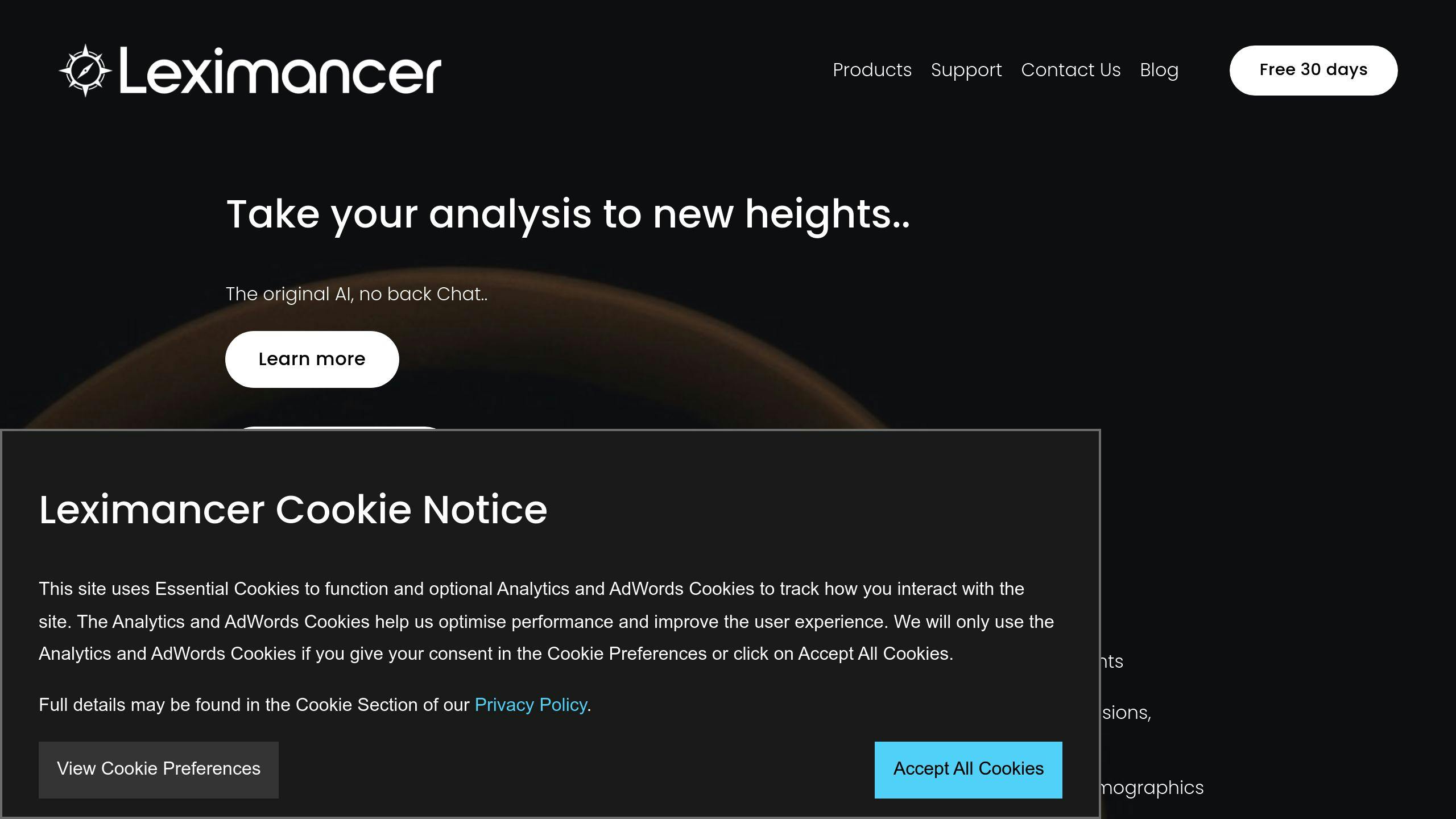
Leximancer stands out with its automated visualization features. Using natural language processing, it identifies and maps conceptual relationships within text data. This automation not only speeds up the process but also ensures accurate theme detection. The visual maps generated by Leximancer help researchers grasp the broader context of their data more effectively.
Thematic
Thematic uses advanced language models to identify patterns, analyze sentiment, and track trends. It also allows users to categorize themes based on their needs, offering actionable recommendations. This makes it a go-to platform for organizations looking to extract insights from customer feedback quickly and efficiently.
XM Discover
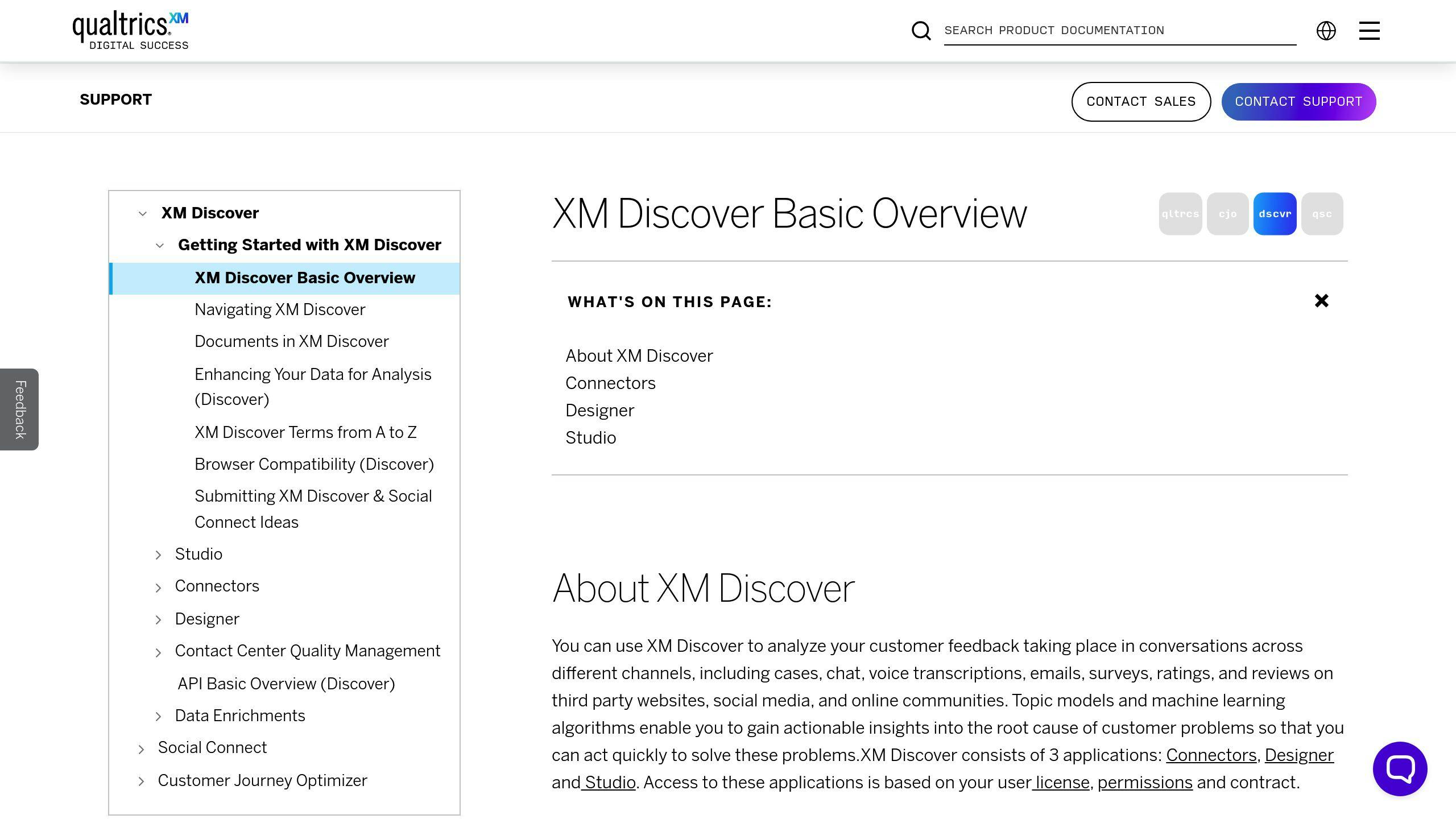
XM Discover integrates survey design, text analysis, and reporting into one platform. It processes open-text responses to uncover emerging themes and sentiments, providing insights that are easy to act on. This tool is particularly helpful for decision-makers aiming to understand customer feedback trends.
Dovetail
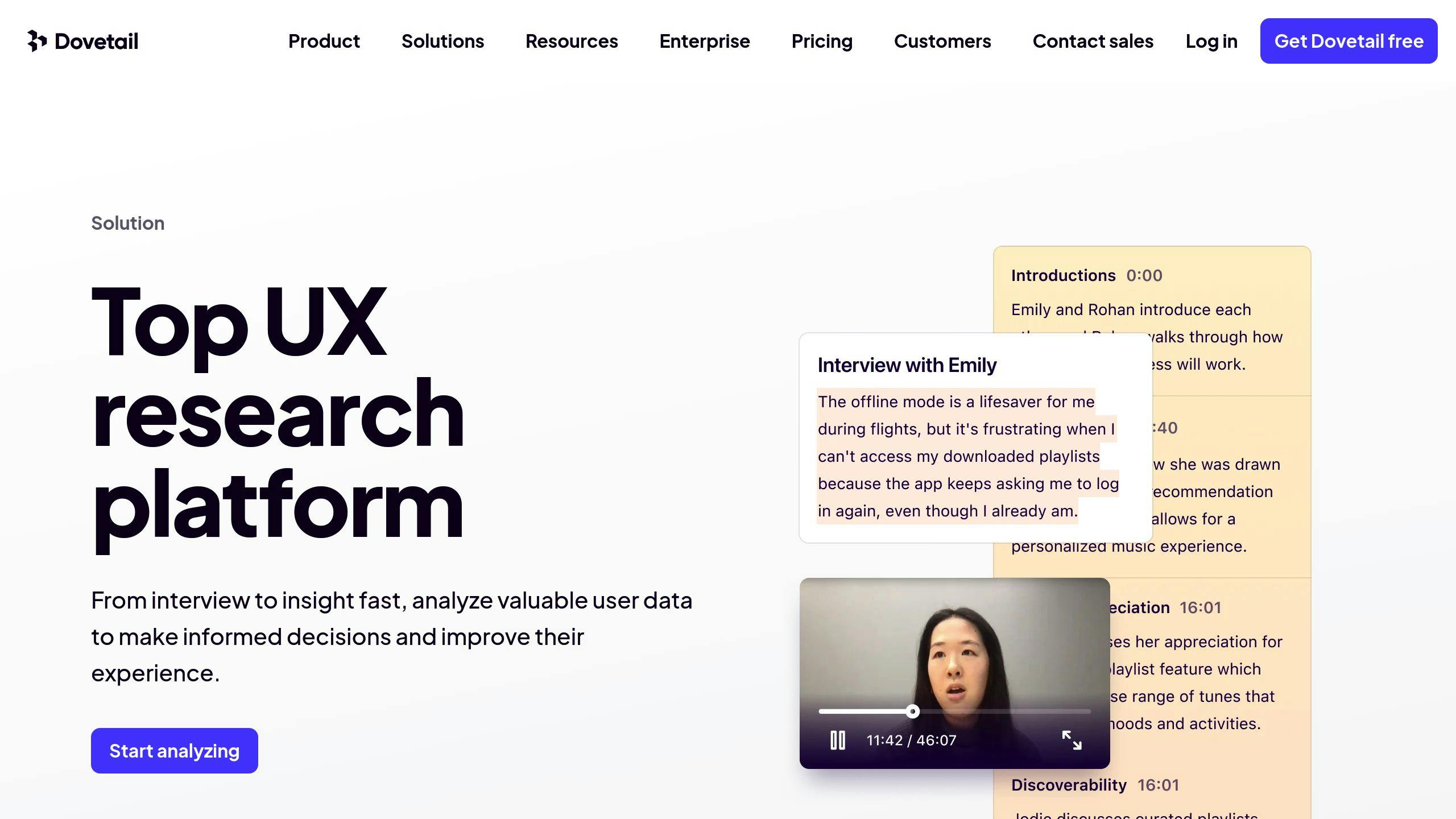
Dovetail combines AI-powered insights with user-friendly visualization tools, making it ideal for qualitative data analysis. Its interface is accessible for researchers of all experience levels, especially those in UX research.
Some standout features include:
- Highlighting and tagging tools for pinpointing themes
- Collaboration options for team-based projects
- Built-in sentiment analysis
- Advanced reporting and visualization capabilities
Dovetail also helps researchers organize taxonomies and create repositories, streamlining workflows with the help of AI while maintaining a strong human touch. This balance makes it a valuable tool for modern research needs.
sbb-itb-3623b4a
Comparison of AI Tools for Theme Analysis
Features and Tool Highlights
Understanding how various AI tools meet different needs is essential for effective theme analysis. Here's a breakdown:
| Tool | Key Features | Best For | Advantages |
|---|---|---|---|
| ATLAS.ti | Handles a variety of data formats with advanced coding | Research teams working with mixed data types | Offers versatility for complex projects |
| Leximancer | Automated concept mapping and visualization | Teams needing visual insights | Quickly identifies themes and relationships |
| Thematic | Analyzes language and tracks trends | Customer feedback analysis | Extracts actionable insights from large datasets |
| XM Discover | Combines survey and text analysis with reporting | Customer experience teams | Provides a complete feedback analysis tool |
| Dovetail | Collaborative tools with sentiment analysis | UX research teams | Easy-to-use interface with strong features |
Real-World Applications
Customer Insights
- Thematic: Useful for analyzing customer support tickets to uncover recurring problems, such as delays or product flaws, allowing businesses to address them proactively.
- XM Discover: Processes survey data to monitor trends in customer satisfaction over time.
Research Applications
- ATLAS.ti: Academic researchers rely on it to analyze data in multiple formats for comprehensive studies.
- Leximancer: Helps market researchers visualize and map consumer behavior patterns effectively.
- Dovetail: Popular among UX research teams (used by 77.1% of researchers employing AI tools [2]) for its collaborative and intuitive analysis features.
These examples highlight how each tool solves specific challenges, emphasizing the importance of evaluating features before choosing the right solution.
Key Factors to Consider: Look at data volume, team size, ease of use, integration options, and budget. For instance, Leximancer and Thematic are great for handling large datasets, while Dovetail stands out for its team-focused features.
Complementary Tools: AI for Infographic Creation
AI tools are changing the way we turn thematic analysis results into engaging visuals, making it easier to share insights and tell compelling data stories.
Text to Infographic
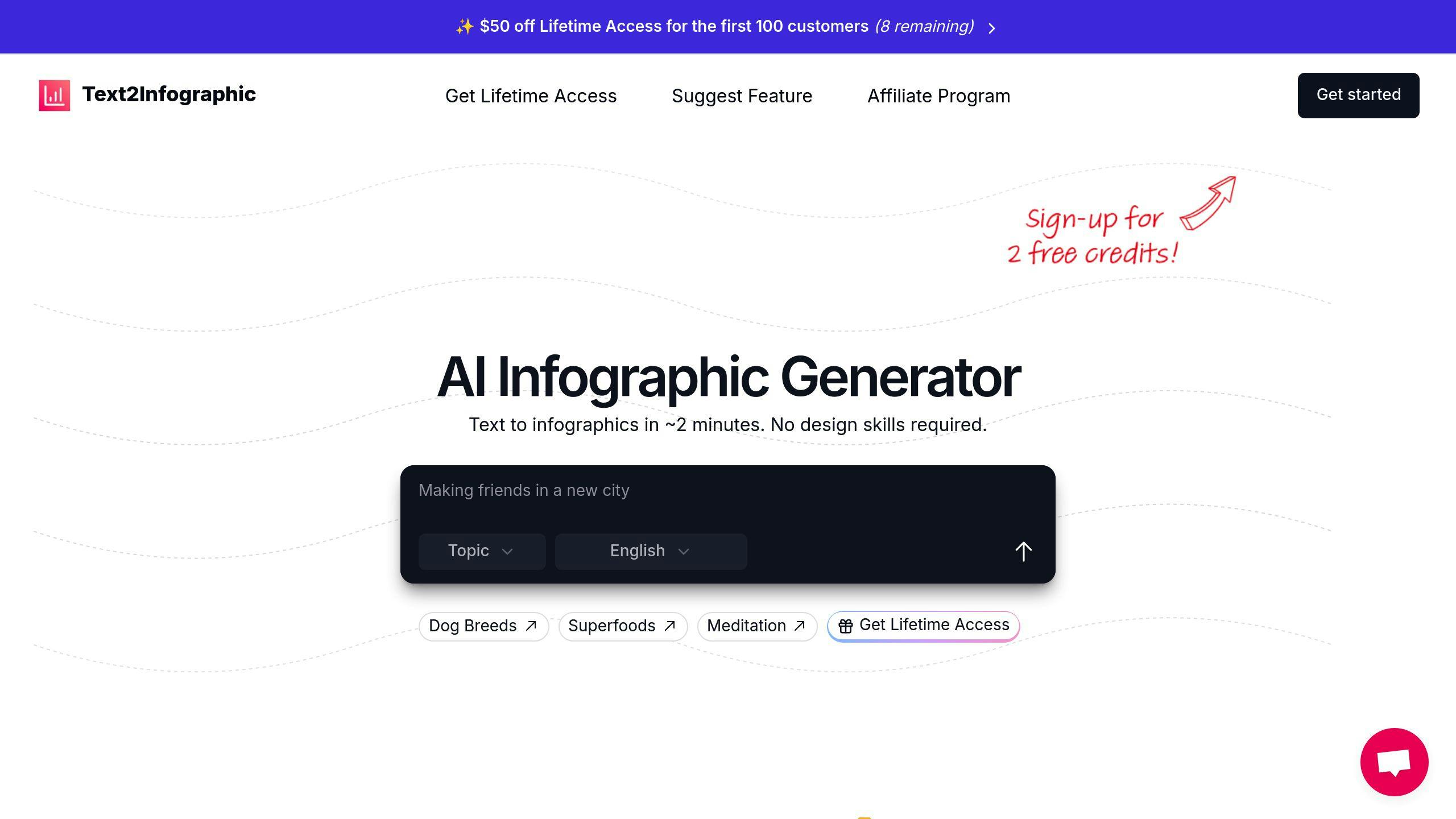
This tool transforms thematic analysis results into customizable, multilingual infographics. It offers features like automatic topic research and the ability to align visuals with your brand. Its support for multiple languages makes it a great choice for teams handling diverse datasets.
Piktochart AI
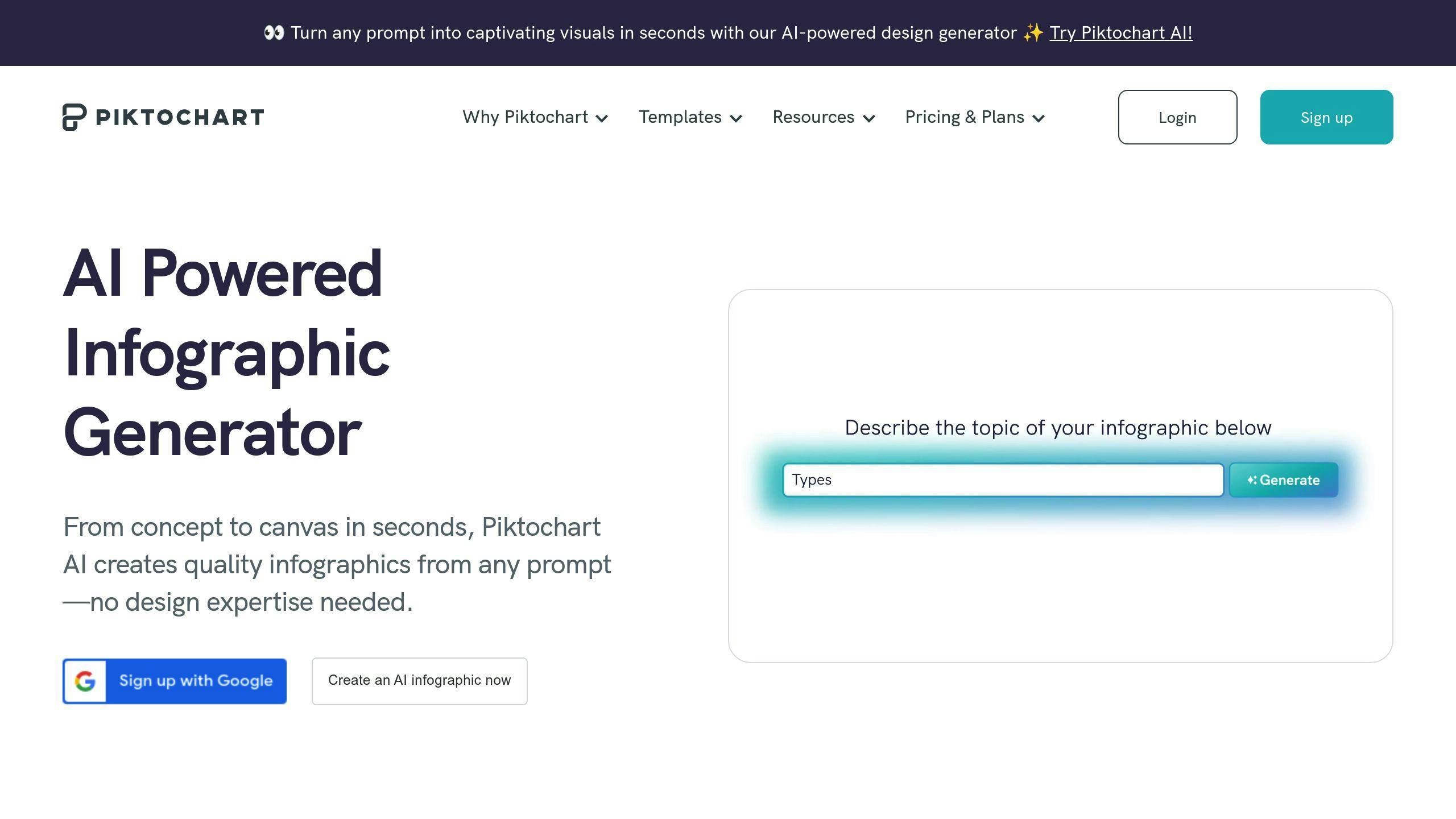
Piktochart AI helps create polished, customizable visuals from thematic data. It simplifies the process of illustrating complex connections between themes and subthemes, making it a practical option for teams looking to present their findings clearly.
Venngage AI
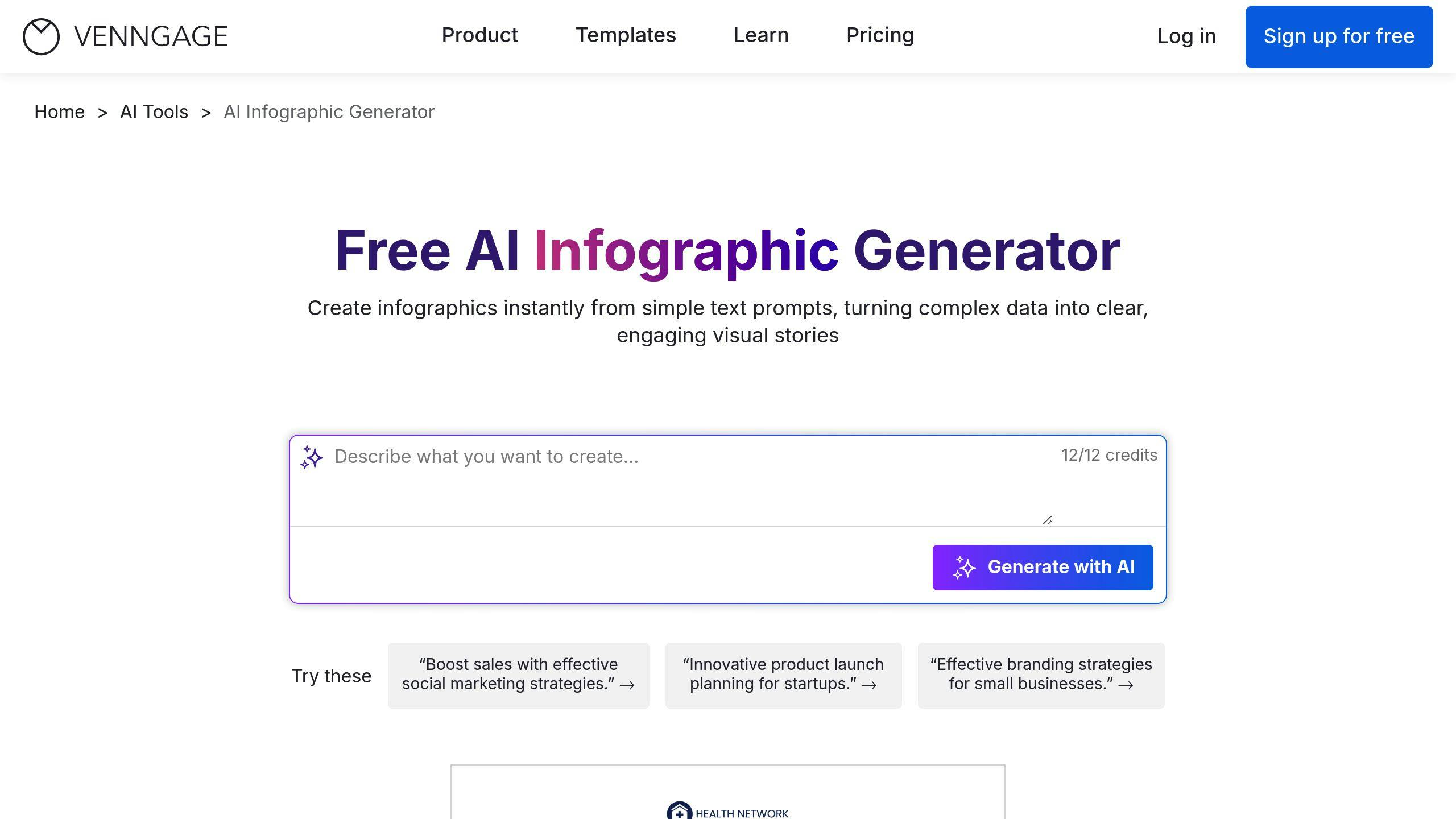
Venngage AI focuses on turning intricate themes into easy-to-understand graphics. Its AI-driven tools allow researchers to transform qualitative data patterns into visuals that are both clear and engaging, improving comprehension.
When using these tools, keep these factors in mind for the best results:
- Integration: Check if the tool works seamlessly with your existing thematic analysis software.
- Customization: Ensure the tool offers enough flexibility to accurately represent your themes.
- Export Options: Look for options that make sharing and publishing your visuals straightforward.
Conclusion and Key Points
AI-driven tools have reshaped how we approach qualitative data analysis. By leveraging natural language processing and machine learning, these platforms offer insights that were previously hard to achieve.
Here’s how AI is making a difference in thematic analysis:
- Faster and More Accurate Analysis: AI tools handle large datasets efficiently, identifying patterns that might go unnoticed in manual analysis [1] [3].
- Superior Pattern Recognition: Platforms like Leximancer and ATLAS.ti uncover intricate relationships in data, helping refine content strategies [1] [4].
- Turning Data into Action: Visualization tools and AI-driven insights allow teams to translate findings into practical strategies for content and marketing [1] [3].
Factors for Successful AI Use
To get the most out of AI tools, consider these key factors:
| Factor | Importance | Key Insight |
|---|---|---|
| Data Quality | High | Clean, accurate data improves results. |
| Tool Selection | Medium | Choose tools that fit your specific needs. |
| Human Oversight | Essential | Expert review ensures reliable insights. |
| Integration | Important | Smooth integration boosts workflow efficiency. |
Visualization tools, such as those offered by Dovetail and Thematic, make it easier for teams to interpret and act on complex data. These tools transform raw information into actionable strategies, giving organizations a competitive edge.
While AI continues to evolve, the best results come from blending automated tools with human expertise [4]. This approach ensures accurate, efficient analysis while pushing the boundaries of qualitative research.
FAQs
This FAQ dives into common questions about how AI is shaping thematic analysis, building on the tools and techniques we’ve covered.
Is there AI for thematic analysis?
Absolutely. AI tools specifically designed for thematic analysis are becoming more advanced and widely used. In fact, 77.1% of UX researchers now integrate AI tools into their work, according to a recent report [2]. This highlights the growing role of AI in qualitative research.
Platforms like ATLAS.ti and Leximancer leverage machine learning and language processing to automate theme detection, uncover patterns, and handle large datasets. These tools can:
- Process thousands of responses at once
- Cut analysis time by up to 70%
- Turn data into clear, actionable visuals for easier communication
- Highlight connections that might go unnoticed in manual analysis
Despite their efficiency, human oversight is still essential [2]. Researchers need to review and validate AI findings to ensure they align with project goals and deliver accurate results.
AI’s role in thematic analysis is expanding, providing researchers and marketers with new ways to extract insights while balancing automation with human expertise.